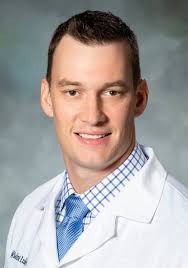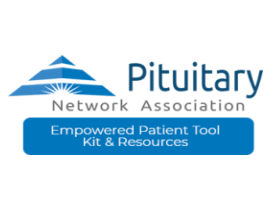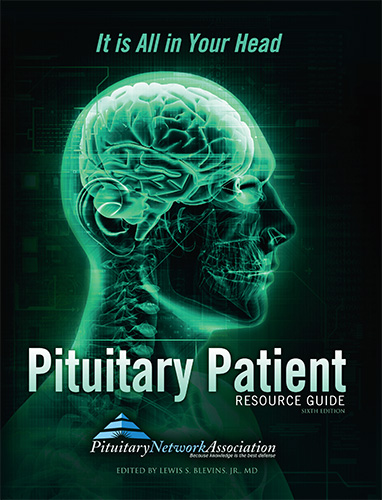Don’t Miss Our Exciting Upcoming Events!
Discover Leading Professionals and Specialized Services in Healthcare
Search
Recent Webinar
Patient’s Corner
Introducing Patient’s Corner, a place for you, the patient, to share your stories. If you have a story you would like to share please contact us below.
PNA Spotlight: Dr. Jonathan Breshears
This month the PNA Spotlight focuses on Dr. Jonathan Breshears, a neurosurgeon at St. Luke’s Hospital in Kansas City, Missouri and a Clinical Assistant Professor in the Department of Surgery at the University of Missouri-Kansas City School of Medicine. Dr. Breshears did his undergraduate work and earned his M.D. at Washington University in St. Louis. He did a residency at UCSF Medical center and a fellowship in open and endoscopic skull base surgery at MD Anderson Cancer Center. He specializes in the treatment of benign and malignant tumors involving the brain and skull base, particularly pituitary tumors, acoustic neuromas, and meningiomas. He was kind enough to answer a series of questions from the PNA. Here are his answers, lightly edited for clarity.
Please Tell Us About Your Practice
I did my neurosurgery training at UCSF, and there I had the good fortune to be exposed to some really excellent pituitary surgeons including Sandeep Kunwar, Manish Aghi, and also Louis Blevins. They are my early mentors in pituitary surgery, and how I got exposure to the PNA. From there, I did a skull base fellowship at MD Anderson and had more specialized training in taking care of lesions on the base of the skull, and pituitary tumors as a part of that. My practice now is in Kansas City, Missouri, at the St Luke’s Hospital at the Marion Bloch Neuroscience Institute. I’ve been here five years, and we’ve built up a multi-disciplinary team, including endocrinologists, neuropathologists, neuroradiologists, a neuro ophthalmologist as well as my anterior skull base partner, Dr. Vidur Bhalla, who’s a rhinologist trained in skull based surgery. We have a multi-disciplinary program to help take care of patients with pituitary tumors, because those tumors require a team of highly trained specialists. We have all those people in place, part of a specialized program to help take care of these patients. We also have a nurse navigator for our program, so when we get referrals or when people call in, especially if there’s an acute symptom like vision loss, we really try to expedite their care. This way they are able to see multiple specialists and get the labs and the imaging they need as a part of the workup, all in the same day. This minimizes the number of trips the patient has to make.
What would you say inspired you to go into this field?
When I started medical school, my background was in engineering. One of the neurosurgeons at Washington University was doing research on brain computer interfaces and the application of engineering technology to try to better understand the brain. So I spent time doing research in his lab, which exposed me to the culture of neurosurgery. And that’s really where my interest in neurosurgery started. As I went through my training at UCSF and got more actual clinical exposure and training, I developed an interest in pituitary and skull-based surgery.
How would you say your field has evolved?
I think the standards have gone up as the training has gotten better. Certainly, technology has changed. I do surgery endoscopically, but I was trained by people who do it microscopically. The technology in either case is better now, the image guidance has improved. All of it is better. However, in addition, the bar has been raised for what the outcomes of surgery should be. These days, there’s a more mainstream understanding that this surgery is really best done by specialists who work as a part of a multi-disciplinary team, which results in better outcomes for patients. The standards of surgical technique are higher and include pseudo capsular dissection and minimizing residual tumor left behind, doing things like medial cavernous sinus wall resection to ensure that you cure disease for secreting tumors. With more focus on the disease and more study into surgical techniques, the standards have gone up over time. It used to be the case 20 or 30 years ago that to really have an expert pituitary surgeon, you had to really travel far. But now, the training has been disseminated, so now the surgical standard is more uniform across the country.
I imagine the key, first, is to be sure patients get diagnosed correctly and early on.
Yes. There are still those really sad cases where people have been losing vision for years, and no one realized what was going on, and then they finally figure it out, very late in the game. But we are raising the bar for pituitary care in the region. I’m in a more rural area of the country, and someone from a small town just a couple hours away can come here and get expert care. We can take care of their tumor, as opposed to them having to travel across the country to a major center. We are now providing that level of care in the region.
What made you want to be a part of the PNA?
I like how the organization provides a place for patients to go to find people who specialize in in this type of surgery. Again, it’s something where you really want to be treated by people who are dedicated to doing this and do a lot of it. I first heard about the PNA from my mentors at UCSF.

“It’s something where you really want to be treated by people who are dedicated to doing this and do a lot of it. “
Get Involved
If you wish to donate, contact:
- P.O. Box 1958, Thousand Oaks, CA 91358
- Office: 805.499.9973
- Fax: 805.480.0633
- Email: [email protected]

Coming Events

Volunteer With Us

Pituitary Patient Toolkit

Pituitary Brochures

The Pituitary Patient Resource Guide Sixth Edition is now available! Be one of the first to have the most up-to-date information.
The Pituitary Patient Resource Guide a one of a kind publication intended as an invaluable source of information not only for patients but also their families, physicians, and all health care providers.
It contains information on symptoms, proper testing, how to get a diagnosis, and the treatment options that are available. It also includes Pituitary Network Association’s patient resource listings for expert medical care.
Latest News
News Articles February 2025
Pituitary journey: woman learns to slow down while facing melanoma, pituitary inflammation Blogger Amanda Goodwin is a hard-charging businesswoman, who was forced to slow down and “embrace the sick”...
PNA Highlights February 2025
“The man who earns a million, but destroys his health in the process is not really a success.” – Zig Ziglar PNA Spotlight: Dr. Kevin Lillehei Dr. Kevin Lillehei is chair of the Department of...
February 2025 Research Articles
Pituitary Tumors Etiology, presentation, and outcomes of hyperprolactinemia due to pituitary masses in children and adolescents. Kilci F, Sarikaya E, Murat NÖ, Deniz A.Endocrine. 2025 Feb 2. doi:...













